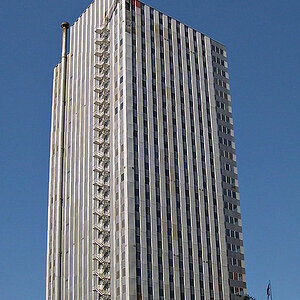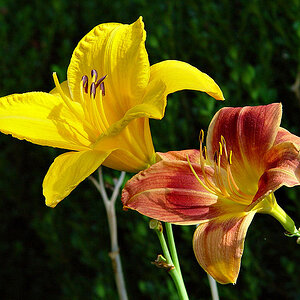Navigation
Install the app
How to install the app on iOS
Follow along with the video below to see how to install our site as a web app on your home screen.

Note: This feature currently requires accessing the site using the built-in Safari browser.
More options
You are using an out of date browser. It may not display this or other websites correctly.
You should upgrade or use an alternative browser.
You should upgrade or use an alternative browser.
raw format looks like more noise
- Thread starter willg133
- Start date
Meysha
still being picky Vicky
- Joined
- Feb 21, 2005
- Messages
- 4,152
- Reaction score
- 60
- Website
- vickywall.deviantart.com
- Can others edit my Photos
- Photos NOT OK to edit
I've never used RAW before but from reading this forum, apparently it's a better quality because there's no compression. and in a JPEG, it gets compressed before it's written to the card. Also I think I read somewhere that everytime you reopen and save a JPEG in PS more noise is created or the quality goes down or something. But with a Raw that doesn't happen. Someone will have to clarify this though.
I shoot exclucivly in RAW mode, as it gives more control over the final image. White balance can be easily adjusted to my liking with a simple mouse click. Every time you save an image as JPEG you lose more image quality as the compression accumulates. There are many more reasons why shooting in RAW is the better option in my opinion.
Here are 2 very good articles that dicuss the RAW format:
http://www.luminous-landscape.com/tutorials/understanding-series/u-raw-files.shtml
http://www.luminous-landscape.com/essays/rawtruth1.shtml
Here are 2 very good articles that dicuss the RAW format:
http://www.luminous-landscape.com/tutorials/understanding-series/u-raw-files.shtml
http://www.luminous-landscape.com/essays/rawtruth1.shtml
andycarnall
TPF Noob!
The basic reason that most people are a bit disappointed with raw the first time they use is is because most digital cameras (300d definitely does this) apply sharpening and contrast to the raw image when they convert it to a jpeg in the camera.
Using RAW you get the file without any of this processing done, which is great if you know what you're doing, but it does mean that out of the camera the images don't look great.
There's lots of advice and tutorials on how to work with raw if you do a couple of searches - Luminous Landscape was my starter bible, it's a really good site.
Personally I shoot RAW for anything I think I may want to print (so most things) and then convert them to TIFF files to store on the PC. I convert them to jpeg as the last step so I can upload them to the web. For printing I usually send tiff files to the processor (don't have a printer at home)
Tiffs are quite large files, but don't have any of the compression issues that jpegs have. Every time you hit save you lose data in a jpeg file, given that I save the file every 4-5 minutes when I'm working on an important picture I may have saved it 30-40 times before I'm done, and by then the jpeg issues can appear.
Using RAW you get the file without any of this processing done, which is great if you know what you're doing, but it does mean that out of the camera the images don't look great.
There's lots of advice and tutorials on how to work with raw if you do a couple of searches - Luminous Landscape was my starter bible, it's a really good site.
Personally I shoot RAW for anything I think I may want to print (so most things) and then convert them to TIFF files to store on the PC. I convert them to jpeg as the last step so I can upload them to the web. For printing I usually send tiff files to the processor (don't have a printer at home)
Tiffs are quite large files, but don't have any of the compression issues that jpegs have. Every time you hit save you lose data in a jpeg file, given that I save the file every 4-5 minutes when I'm working on an important picture I may have saved it 30-40 times before I'm done, and by then the jpeg issues can appear.
I agree with one of the things Andy said: RAW is great if you know what youre doing with it. With my d70 I've dabbled a bit in RAW and JPEG. It is great to have RAW files to work with--but actually working with them is a pain in the rear for me. I do not if anyone else experiences this, but even with 1gb RAM, Nikon Capture is still the slowest program I've ever used (with RAW).
I got so tired of it, I decided to work with JPEGs and my prints (11x14) always come out fine--of course, you need a good picture to begin with to have nice prints.
One person told me "If you have to ask about the benefits of RAW, then you shouldn't be using it." He was implying that working with RAW is easy enough for people who know what they want and how to get there.
My 2 cents.
Craig
I got so tired of it, I decided to work with JPEGs and my prints (11x14) always come out fine--of course, you need a good picture to begin with to have nice prints.
One person told me "If you have to ask about the benefits of RAW, then you shouldn't be using it." He was implying that working with RAW is easy enough for people who know what they want and how to get there.
My 2 cents.
Craig
BadRotation
TPF Noob!
remember jpeg is only 8 bit (256 brightness levels), while raw is 14 bit (16,384 brightness levels)
SLOShooter
TPF Noob!
RAW is super if you have the time and desire to sit down and post-process every shot that you take. True you can do batch work but I find that every shot needs something different. There's a bit more leneancy in exposure in white balance when shooting in RAW too. However if your at a shoot and your taking hundreds of images it might be a better idea to shoot in the highest quality JPEG setting and spend a bit more time getting the balance and the exposure setup correctly in-camera.
Personally I enjoy fooling around with the digital negative in PS almost as much as actually taking the picture so I always shoot in RAW. However I have found it a chore to edit images after a long weekend or after a vacation where JPEG would have worked just fine.
Personally I enjoy fooling around with the digital negative in PS almost as much as actually taking the picture so I always shoot in RAW. However I have found it a chore to edit images after a long weekend or after a vacation where JPEG would have worked just fine.
andycarnall
TPF Noob!
photong said:is raw sharper too?
Normally no - depends on the camera. Most (I think all) use an anti-aliasing filter infront of the sensor, the in camera processing applies sharpening to the image when conveting to jpeg. Raw is recorded before this, so you need to do the sharpening on the PC (hence the batch process actions around)
For Canons (to varying degrees) the RAW will look less sharp and less saturated out of the camera compared to the jpeg. The higher level camera do less processing of the RAW to jpeg, but the 300d applies quite a lot of sharpening to the image.
triggerhappy
TPF Noob!
Raw will give you a photo file that is:
However, I will admit that in difficult lighting situations, raw has a definate advantage - particularly because you can easily adjust the white balance later.
I guess in the end it is a personal decision.
my 2c
- ps. one more thing. If you want to see how the quality of a jpg degrades with the number of saves, simply try it. I recently did it with a couple of mine and noticed artifacts starting to develop at about 30+ saves.
- Larger = slower to handle
- Higher quality = better pictures
However, I will admit that in difficult lighting situations, raw has a definate advantage - particularly because you can easily adjust the white balance later.
I guess in the end it is a personal decision.
my 2c
- ps. one more thing. If you want to see how the quality of a jpg degrades with the number of saves, simply try it. I recently did it with a couple of mine and noticed artifacts starting to develop at about 30+ saves.
deb
TPF Noob!
I don't see the big deal about shooting in raw. If you get the white balance right when you take the shot and record the image at the highest jpeg quality you should be fine. As you work with the image, save the image as a psd file until you have it just like you want it. Flatten the image and save as a 10 quality jpeg. Even at 16 * 20 and a magnification glass you won't see jpeg artifacts if you have enough mp.
Here are some miscellaneous technical clarifications (I hope)
JPEG:
JPEG is a compression method, not a file type, though it is common parlance to refer to a JFIF file containing JPEG-compressed content as a "jpeg file" and to give it a .jpg extension. TIFF files, for example, can also contain JPEG content, and in fact usually do, at least for the thumbnail.
There are both lossy and loss-less versions of JPEG compression, so it is technically incorrect to say that you always lose quality when you save a JPEG (regardless of what you meant by "JPEG"). But usually, unless you know what you are doing, you get a lossy JPEG compression with most apps and utilities.
The usual JPEG lossy compression is quite extreme, tossing out bit resolution (optionally, I think JPEGs can be 16-bit but usually aren't) and running a complex mathematical transformation, that I think is a form of Fourier transform with bandlimiting. The resulting image, unless you deliberately screw it up, appears just as good as the original to most human eyes (unless you do too many cumulative lossy saves).
The "imperceptable" detail that is lost in truncating the word length to 8 bits plus JPEG compressing, still serves a purpose. With 16 bits (or 12 bits, since many so-called 16-bit RAW formats are actually left-justified 12-bit formats) the extra detail can be exploited to recover details, such as burnt-out highlights or overly dark shadows, that appear to be lost but really aren't (until you toss out that detail and do JPEG compression). The same considerations apply to color corrections. Once you do the compression, you may find it impossible, for example, to color correct the mid-tones without simultaneously throwing off the highlights or shadows.
As an aside: The extra bits beyond 8 per color sample are so imperceptable that one can actually hide data in them (a form of cryptography) that is unrelated to the image. "Secret messages" can be sent this way.
TIFF
TIFF is a file format. The actual data in the file can be RAW, RGB, YMCK, HSV, or any other format. In fact, you can have multiple "directories" in a TIFF file. One might contain a full-resolution image while another may have a thumbnail. Yet another may contain EXIF data. While both JPEG/JFIF and TIFF may be either 8 or 16 (or even 1) bit, compressed or not, usually JPEG/JFIF files are used for compressed 8-bit data while TIFFs often contain uncompressed 16-bit data, which explains their larger size.
RAW
The RAW format contains data directly digitized from the image detector. It is necessary to adjust both for non-ideal effects in the detector and to correct for exposure/color balance/etc to produce the final image. As a typical example, my Canon EOS 20D in "RAW+JPEG" mode dumps the RAW file to the memory card and then adjusts the image and corrects the color, sharpens, saturates, etc., in a user-selectable way, truncates the word length, and saves the compressed result in a JPEG/JFIF file. In this way, it is often said that the .jpg file is analogous a photographic print while the RAW file is analogous to a photographic negative, because in a photographic negative, there is detail that doesn't appear in the final print.
Also, the so-called "proprietary RAW format" in the .CR2 files that my 20D writes is really a TIFF file. It contains the uncompressed RGB data, two different JPEG-compressed (one lossless) reduced-resolution "thumbnails," EXIF data, and 3 undocumented TIFF tags (the proprietary part).
The older .CRW files made by Canon digital cameras are CIFF files.
8-bit, etc.
The .jpg images typically made by cameras have 8 bits each for red, green, and blue. This should not be confused with 8-bit colormap format, where there are only 256 distinct colors, with 1 8-bit integer used to index a 256-color table. In this crude format, one can easily see artifacts from the limited color resolution. The 8-bit .jpg has 24 bits per pixel while the 8-bit colormap has only 8 bits per pixel.
The best color you can display on most (perhaps all?) monitors is this 24-bit color. (Well, actually this is a limitation of the video card, not the monitor.) So-called 32-bit color is actually 24-bits left-justified in a 32-bit word (actually it could be right-justified, or even centered, etc, as well) with the remaining bits set to 0 (unless you want to hide some information in them).
The so-called "16-bit" images in RAW files really means 16 bits per color sample times 3 colors per pixel, or 48 bits per pixel.
In reality, the .CR2 files made by my EOS 20D are only 12-bit images, and are "packed" into the 32-bit words, straddling the word boundaries to avoid wasting space. Because of this, the file gets even bigger if I use dcraw to convert it to an uncompressed 16-bit TIFF, for example.
In general, so-called n-bit images often have only m bits per color sample (m<n) for various values of n and m.
Is RAW sharper than JPEG?
Well, the JPEGs have truncated words and lossy compression, which makes them less sharp. But also the camera "enhances" the jpeg image, including optional digital sharpening in my 20D. So read into that what you will.
What is important to understand is that if you look at the JPEG and RAW images right "out of the box" the JPEG will look much nicer. Nevertheless, the RAW version has far more information content and could potentially look much better than the JPEG after processing. In my 20D, as I suspect in most digital cameras, the RAW file also contains information describing how the camera processed the image to make the JPEG.
When you download the RAW image to a computer, the most basic thing you can do to it is to just apply those adjustments to reproduce JPEG, perhaps uncompressed and without truncation, which is a waste of time and space on your hard drive, as you could just have used the JPEG. But if you need to modify the image, and particularly if you want to correct exposure, contrast, color balance, and highlight and shadow detail, you have much more room to work with if you start with the RAW. This is why I shoot in RAW+JPEG mode. Many of my photos will come out just right (so why waste time post-processing them?) while others will need some adjustments. The RAW file hogs so much space on the memory card that the extra space taken by the .jpg really doesn't make much difference.
I hope this helps your understanding of these technical details and I apologize in advance for any errors I may have made in this extremely long post.
JPEG:
JPEG is a compression method, not a file type, though it is common parlance to refer to a JFIF file containing JPEG-compressed content as a "jpeg file" and to give it a .jpg extension. TIFF files, for example, can also contain JPEG content, and in fact usually do, at least for the thumbnail.
There are both lossy and loss-less versions of JPEG compression, so it is technically incorrect to say that you always lose quality when you save a JPEG (regardless of what you meant by "JPEG"). But usually, unless you know what you are doing, you get a lossy JPEG compression with most apps and utilities.
The usual JPEG lossy compression is quite extreme, tossing out bit resolution (optionally, I think JPEGs can be 16-bit but usually aren't) and running a complex mathematical transformation, that I think is a form of Fourier transform with bandlimiting. The resulting image, unless you deliberately screw it up, appears just as good as the original to most human eyes (unless you do too many cumulative lossy saves).
The "imperceptable" detail that is lost in truncating the word length to 8 bits plus JPEG compressing, still serves a purpose. With 16 bits (or 12 bits, since many so-called 16-bit RAW formats are actually left-justified 12-bit formats) the extra detail can be exploited to recover details, such as burnt-out highlights or overly dark shadows, that appear to be lost but really aren't (until you toss out that detail and do JPEG compression). The same considerations apply to color corrections. Once you do the compression, you may find it impossible, for example, to color correct the mid-tones without simultaneously throwing off the highlights or shadows.
As an aside: The extra bits beyond 8 per color sample are so imperceptable that one can actually hide data in them (a form of cryptography) that is unrelated to the image. "Secret messages" can be sent this way.
TIFF
TIFF is a file format. The actual data in the file can be RAW, RGB, YMCK, HSV, or any other format. In fact, you can have multiple "directories" in a TIFF file. One might contain a full-resolution image while another may have a thumbnail. Yet another may contain EXIF data. While both JPEG/JFIF and TIFF may be either 8 or 16 (or even 1) bit, compressed or not, usually JPEG/JFIF files are used for compressed 8-bit data while TIFFs often contain uncompressed 16-bit data, which explains their larger size.
RAW
The RAW format contains data directly digitized from the image detector. It is necessary to adjust both for non-ideal effects in the detector and to correct for exposure/color balance/etc to produce the final image. As a typical example, my Canon EOS 20D in "RAW+JPEG" mode dumps the RAW file to the memory card and then adjusts the image and corrects the color, sharpens, saturates, etc., in a user-selectable way, truncates the word length, and saves the compressed result in a JPEG/JFIF file. In this way, it is often said that the .jpg file is analogous a photographic print while the RAW file is analogous to a photographic negative, because in a photographic negative, there is detail that doesn't appear in the final print.
Also, the so-called "proprietary RAW format" in the .CR2 files that my 20D writes is really a TIFF file. It contains the uncompressed RGB data, two different JPEG-compressed (one lossless) reduced-resolution "thumbnails," EXIF data, and 3 undocumented TIFF tags (the proprietary part).
The older .CRW files made by Canon digital cameras are CIFF files.
8-bit, etc.
The .jpg images typically made by cameras have 8 bits each for red, green, and blue. This should not be confused with 8-bit colormap format, where there are only 256 distinct colors, with 1 8-bit integer used to index a 256-color table. In this crude format, one can easily see artifacts from the limited color resolution. The 8-bit .jpg has 24 bits per pixel while the 8-bit colormap has only 8 bits per pixel.
The best color you can display on most (perhaps all?) monitors is this 24-bit color. (Well, actually this is a limitation of the video card, not the monitor.) So-called 32-bit color is actually 24-bits left-justified in a 32-bit word (actually it could be right-justified, or even centered, etc, as well) with the remaining bits set to 0 (unless you want to hide some information in them).
The so-called "16-bit" images in RAW files really means 16 bits per color sample times 3 colors per pixel, or 48 bits per pixel.
In reality, the .CR2 files made by my EOS 20D are only 12-bit images, and are "packed" into the 32-bit words, straddling the word boundaries to avoid wasting space. Because of this, the file gets even bigger if I use dcraw to convert it to an uncompressed 16-bit TIFF, for example.
In general, so-called n-bit images often have only m bits per color sample (m<n) for various values of n and m.
Is RAW sharper than JPEG?
Well, the JPEGs have truncated words and lossy compression, which makes them less sharp. But also the camera "enhances" the jpeg image, including optional digital sharpening in my 20D. So read into that what you will.
What is important to understand is that if you look at the JPEG and RAW images right "out of the box" the JPEG will look much nicer. Nevertheless, the RAW version has far more information content and could potentially look much better than the JPEG after processing. In my 20D, as I suspect in most digital cameras, the RAW file also contains information describing how the camera processed the image to make the JPEG.
When you download the RAW image to a computer, the most basic thing you can do to it is to just apply those adjustments to reproduce JPEG, perhaps uncompressed and without truncation, which is a waste of time and space on your hard drive, as you could just have used the JPEG. But if you need to modify the image, and particularly if you want to correct exposure, contrast, color balance, and highlight and shadow detail, you have much more room to work with if you start with the RAW. This is why I shoot in RAW+JPEG mode. Many of my photos will come out just right (so why waste time post-processing them?) while others will need some adjustments. The RAW file hogs so much space on the memory card that the extra space taken by the .jpg really doesn't make much difference.
I hope this helps your understanding of these technical details and I apologize in advance for any errors I may have made in this extremely long post.
Most reactions
-
 428
428 -
 290
290 -
 285
285 -
 271
271 -
 221
221 -
 204
204 -
 185
185 -
 179
179 -
 167
167 -
 166
166 -
 148
148 -
 133
133 -
 120
120 -
 95
95 -
I
94
Similar threads
- Replies
- 14
- Views
- 1K
- Replies
- 3
- Views
- 327
- Replies
- 11
- Views
- 942
- Replies
- 6
- Views
- 626

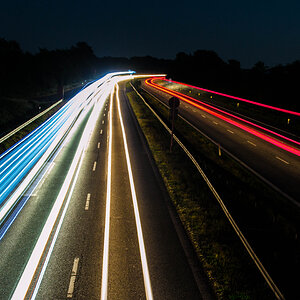
![[No title]](/data/xfmg/thumbnail/32/32003-70dfe149c27224e28ba98e975984e01e.jpg?1619735147)
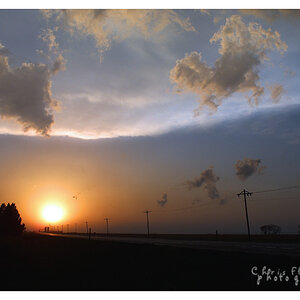
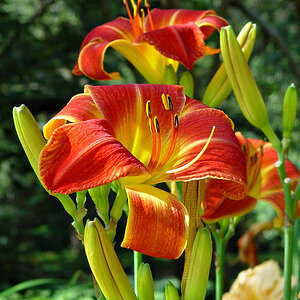
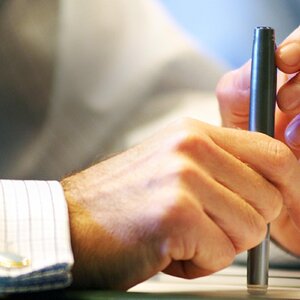
![[No title]](/data/xfmg/thumbnail/36/36643-92fe0dd9e247722bfefe299cd8a549f5.jpg?1619737670)
